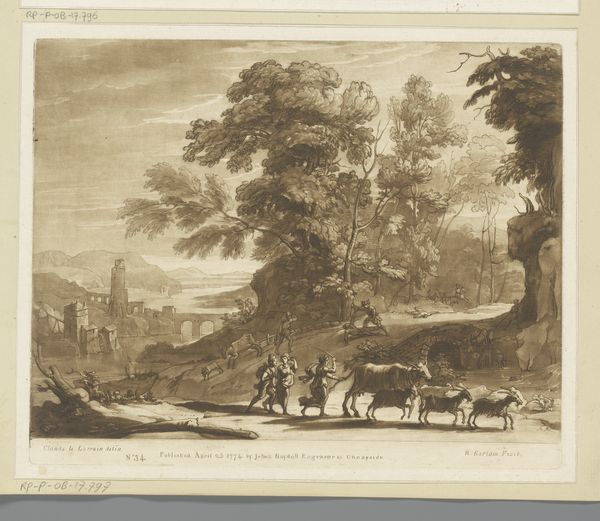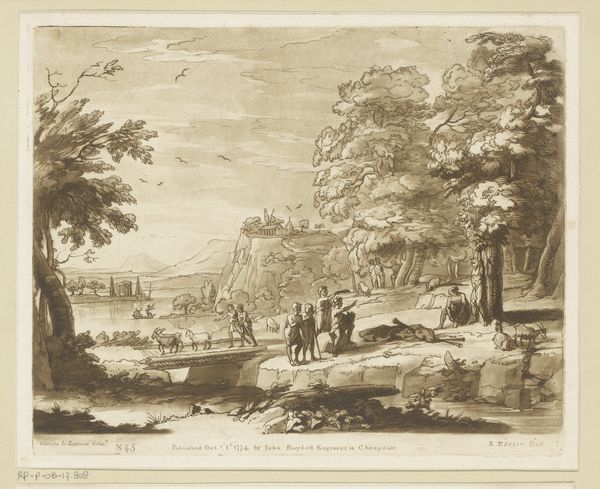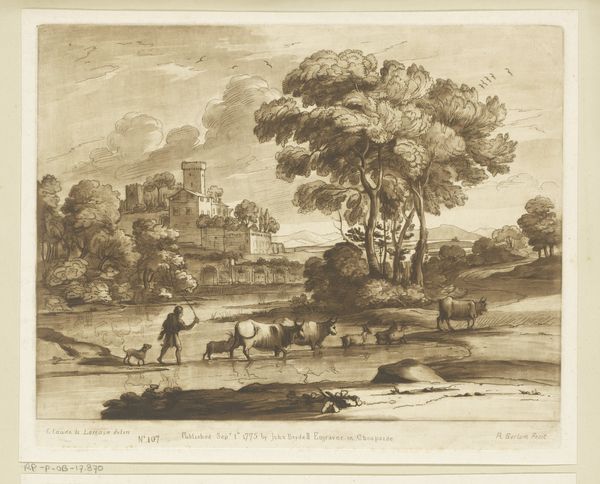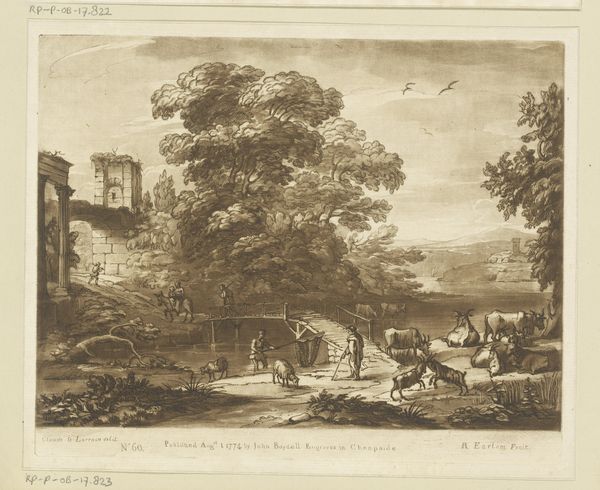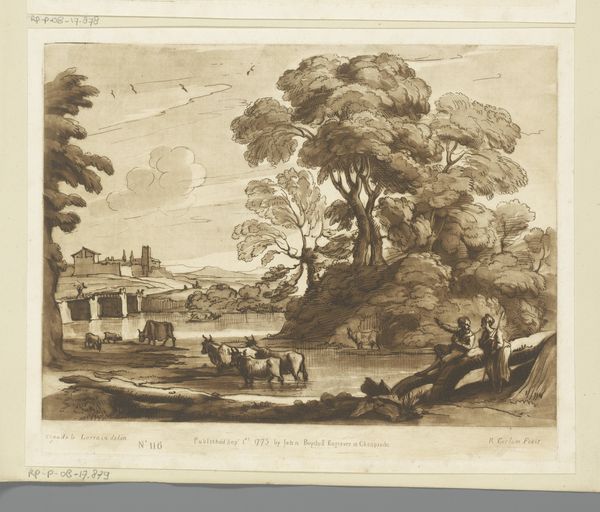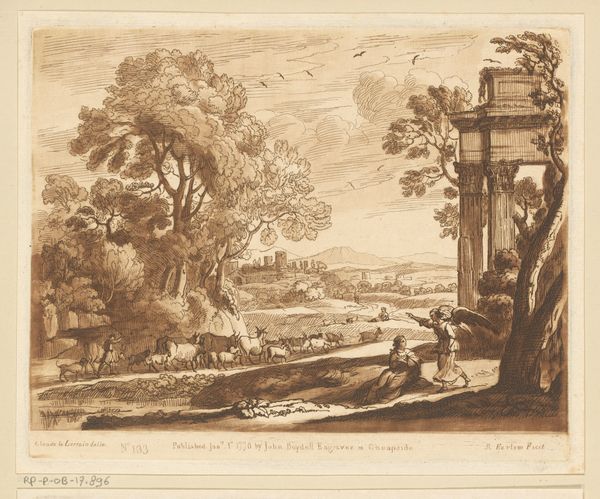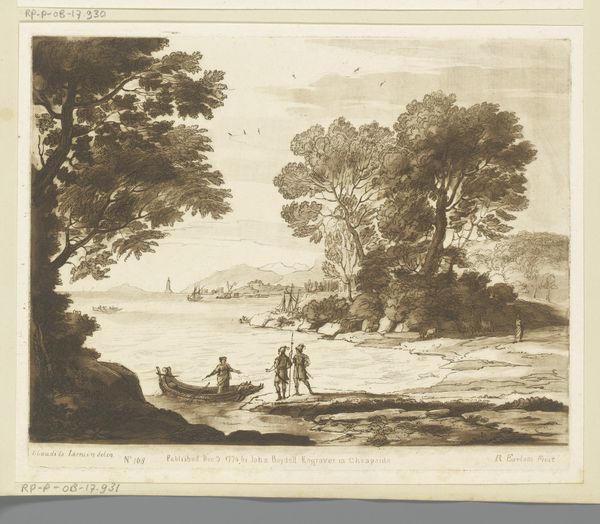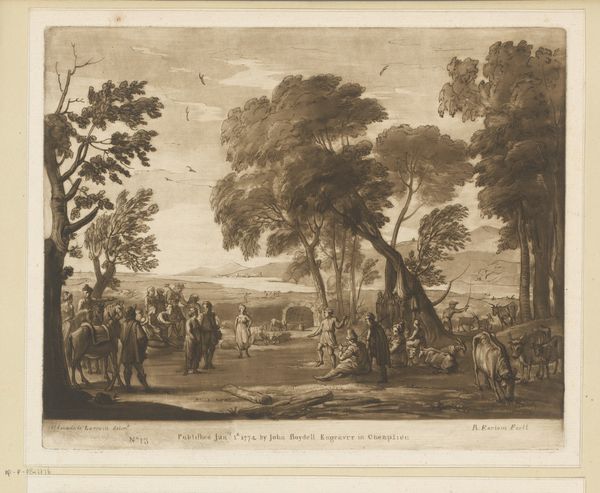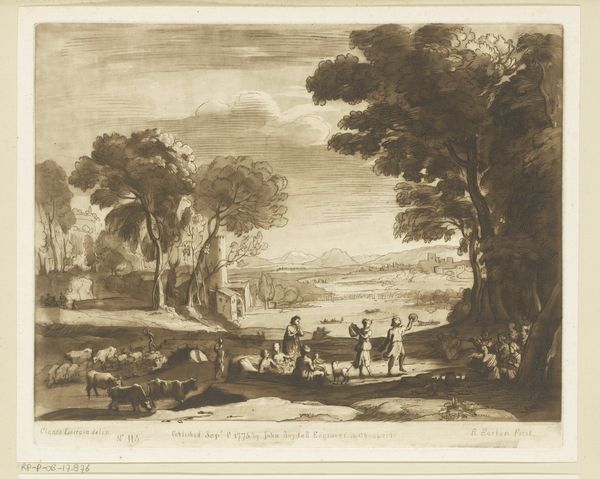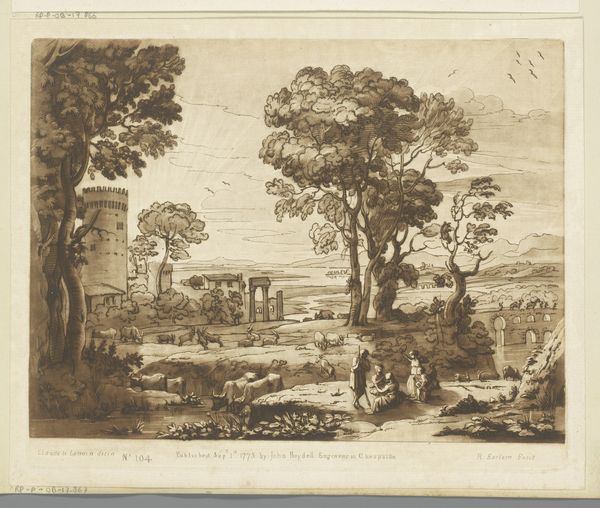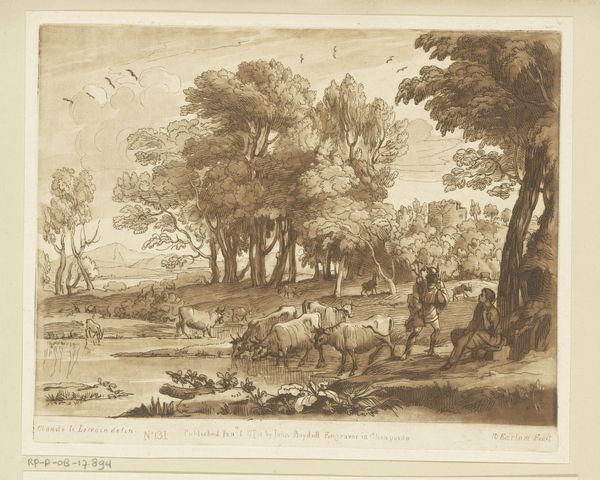
Landschap met stenen brug over rivier, bandieten en vluchtende geiten Possibly 1774
0:00
0:00
Dimensions: height 202 mm, width 257 mm
Copyright: Rijks Museum: Open Domain
Curator: Oh, my stars, this feels like a half-remembered dream—all misty landscapes and dramatic flair. What are we looking at today? Editor: We are looking at an engraving. It is called "Landscape with stone bridge over river, bandits and fleeing goats," likely created in 1774 by Richard Earlom and held here at the Rijksmuseum. It is a detailed print of a very active, pastoral scene. Curator: "Bandits and fleeing goats"—doesn't that just set the stage perfectly? The drama! I love how the soft, hazy light seems to spill across the whole scene. It's melancholic but stirring. But look closer; do we have historical reenactors? Editor: In 1774, it was typical for landscape artists to embed narrative content in their otherwise serene compositions. Consider what an involved, labor-intensive process it would be to make prints at this time. A printmaker like Earlom needed specialized tools and a mastery of techniques such as etching and engraving to realize the atmospheric depth and fine details apparent in this piece. These detailed engravings like Earlom’s were very much intended for mass consumption, displayed or collected like trophies of refined taste. Curator: Absolutely. Taste of bandits, goats, and broken-down Roman architecture… there's such a wildness held within its classical frame. The tree at the border almost leans into the space and shares a tale from another realm. I think this landscape doesn’t just depict a scene; it breathes a whole world into existence, you know? One full of little stories like these unfolding… Editor: Right. Consider too, that prints were key instruments for disseminating artistic styles, enabling broader audiences to interact with interpretations of pastoral landscape. Artists such as Earlom gained status from crafting works for general distribution while generating appreciation through their craft. What an evolution! Curator: So, Richard Earlom creates entire imaginative universes via tiny scratches on copper plates and then the wealthy middle classes purchase this to imagine having this type of wilderness within grasp in reality? What a feedback loop that becomes over the next few centuries! Editor: Exactly. Seeing art this way emphasizes material transformation alongside artistry to fully realize its potential social and symbolic resonance. Curator: I think I'm just seeing something almost… theatrical in the way the scene's composed. But on closer inspection, it may just be in the artist's use of light and how that light creates these pockets of intrigue... It really does get the imagination whirring.
Comments
No comments
Be the first to comment and join the conversation on the ultimate creative platform.
